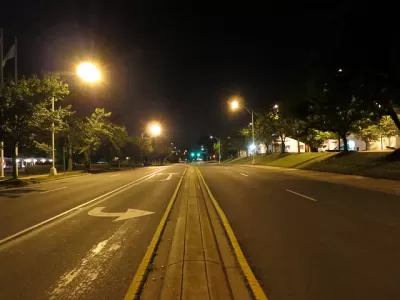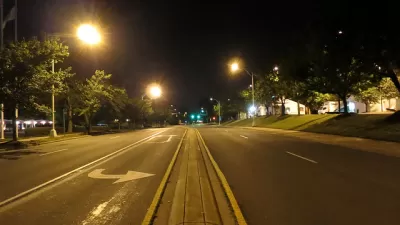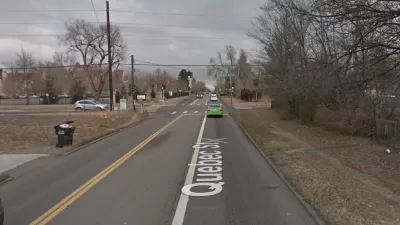It's something we feel intuitively: poorly-designed arterial roads make for less comfortable neighborhoods. That remains the case even if the adjoining residential streets are quiet and safe.

Across the country, it's common to find leafy, pleasant residential streets marred by the traffic-ridden, crime-friendly, unwalkable arterials linking them together. New research from the University of Colorado Denver examines this proximity effect as it concerns dysfunctional major roads.
Building on Donald Appleyard's 1970s research on traffic versus quality of life, the report finds that "high traffic on your street isn't the only type of traffic affecting what you think of where you live. Researchers Wesley Marshall and Carolyn McAndrews found that living near, but not on, a wide, high-traffic arterial can also reduce residential satisfaction."
Rather than overloading arterial roads and highways to create pockets of artificial suburban calm, a more even distribution of vehicle traffic could increase overall quality of life despite higher use of some smaller roads.
Angie Schmitt writes, "In some cases, the study found, people who lived on relatively high-traffic residential streets, but near well-designed low-traffic arterials, had better quality of life than those who lived in the reverse scenario, on a low-traffic street but by a big, badly designed arterial road."
FULL STORY: Study: High-Traffic Arterial Roads Reduce Quality of Life, Even Blocks Away

Planetizen Federal Action Tracker
A weekly monitor of how Trump’s orders and actions are impacting planners and planning in America.

San Francisco's School District Spent $105M To Build Affordable Housing for Teachers — And That's Just the Beginning
SFUSD joins a growing list of school districts using their land holdings to address housing affordability challenges faced by their own employees.

The Tiny, Adorable $7,000 Car Turning Japan Onto EVs
The single seat Mibot charges from a regular plug as quickly as an iPad, and is about half the price of an average EV.

As Trump Phases Out FEMA, Is It Time to Flee the Floodplains?
With less federal funding available for disaster relief efforts, the need to relocate at-risk communities is more urgent than ever.

With Protected Lanes, 460% More People Commute by Bike
For those needing more ammo, more data proving what we already knew is here.

In More Metros Than You’d Think, Suburbs are Now More Expensive Than the City
If you're moving to the burbs to save on square footage, data shows you should think again.
Urban Design for Planners 1: Software Tools
This six-course series explores essential urban design concepts using open source software and equips planners with the tools they need to participate fully in the urban design process.
Planning for Universal Design
Learn the tools for implementing Universal Design in planning regulations.
Smith Gee Studio
City of Charlotte
City of Camden Redevelopment Agency
City of Astoria
Transportation Research & Education Center (TREC) at Portland State University
US High Speed Rail Association
City of Camden Redevelopment Agency
Municipality of Princeton (NJ)





























